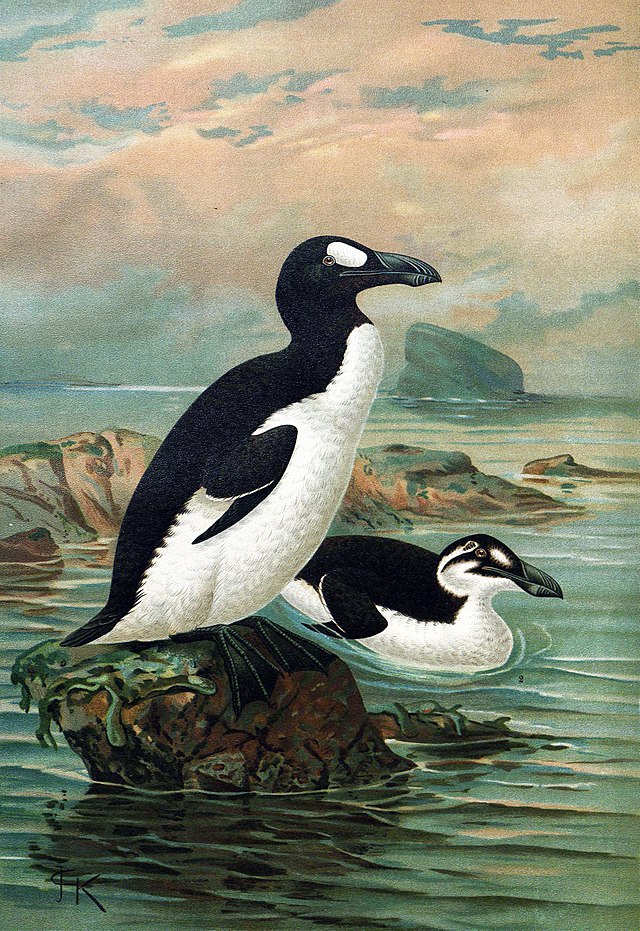 Razorbill
RazorbillBird Islands, Nova Scotia, Canada
Member of the Auks, Murres, and Puffins Family
§A Strop of Razorbills§
~true bird fact~
Hide the babies and the grandmas, unless it's a sassy grandma who raps or something. This bird loves sex. Razorbills are one of those famous monogamous type birds who picks a partner and then sticks together. Sounds charming and quaint, right? Well, let's just say they the fire doesn't go out for our Razorbill couple. Quoth Wikipedia- "The pair will mate up to 80 times in a 30 day period to ensure fertilization". Sure Razorbill, to ensure fertilization, that's what you're having all that sex for.
As long time readers know, one of my jobs as amateurnithologist is to come up with imagined personality traits for birds. These ideas are usually snap judgements, vaguely impressions gained from spending time around the bird, or conclusions I come to based on a highly dangerous and mystical mind-melding techniques. Sometimes, however, your opinion of a bird changes based on your research. To be honest, I never would have pegged Razorbills as enthusiastic lovers. They seem more like fighters to me. Maybe it's the name (and it is probably the most bad ass name among birds), or maybe it's that their closest relative is the extinct Greak Auk. Since I'm not so sure about Razorbill's personality anymore let's talk about his ancestor instead.
 | ||||
This impressive bird was the northern hemisphere's convergent evolution of penguins. Almost three feet tall and with a razor sharp bill almost as long his wings, this flightless bird cut quite an imposing figure. Of course not imposing enough to avoid being hunted to death by explorers. They were used extensively for their meat, their feathers, and as kindling for fires (no kidding, their flesh was oily enough that it was the only source of long burning fuel in places that were too far north to have trees). As Great Auk supplies dwindled, the demand for them and their extraordinarily large eggs only increased with wealthy Europeans. One was killed in England by sailors who thought the bird was a witch in disguise.
The final nail was driven into their coffin when a previously unreachable colony in Iceland was discovered. Ironically, museums who wanted specimens for preservation were responsible for killing the last birds in 1844. They were strangled to death, because the Great Auk as a species apparently hadn't been through enough already. I always hold out hope that extinctions like this turn out to be false, like the miraculous Coelacanth. They are, after all, sea birds, and if there's one place we perhaps haven't explored perfectly it's the Arctic Ocean. A report of a sighting in 1858 holds out a little hope for this kind of thing. Like his contemporary, the Dodo, the Great Auk has gained a place in culture as one of the few birds we've really gotten to see go extinct. Great Auk regret is a fairly common theme in literature, and wikipedia lists a number of depressing sounding children's books especially on the topic.
We'll close with an Ogden Nash poem about the bird
A Caution to Everybody
Consider the auk;
Becoming extinct because he forgot how to fly, and could only walk.
Consider man, who may well become extinct
Because he forgot how to walk and learned how to fly before he thinked.

No comments:
Post a Comment